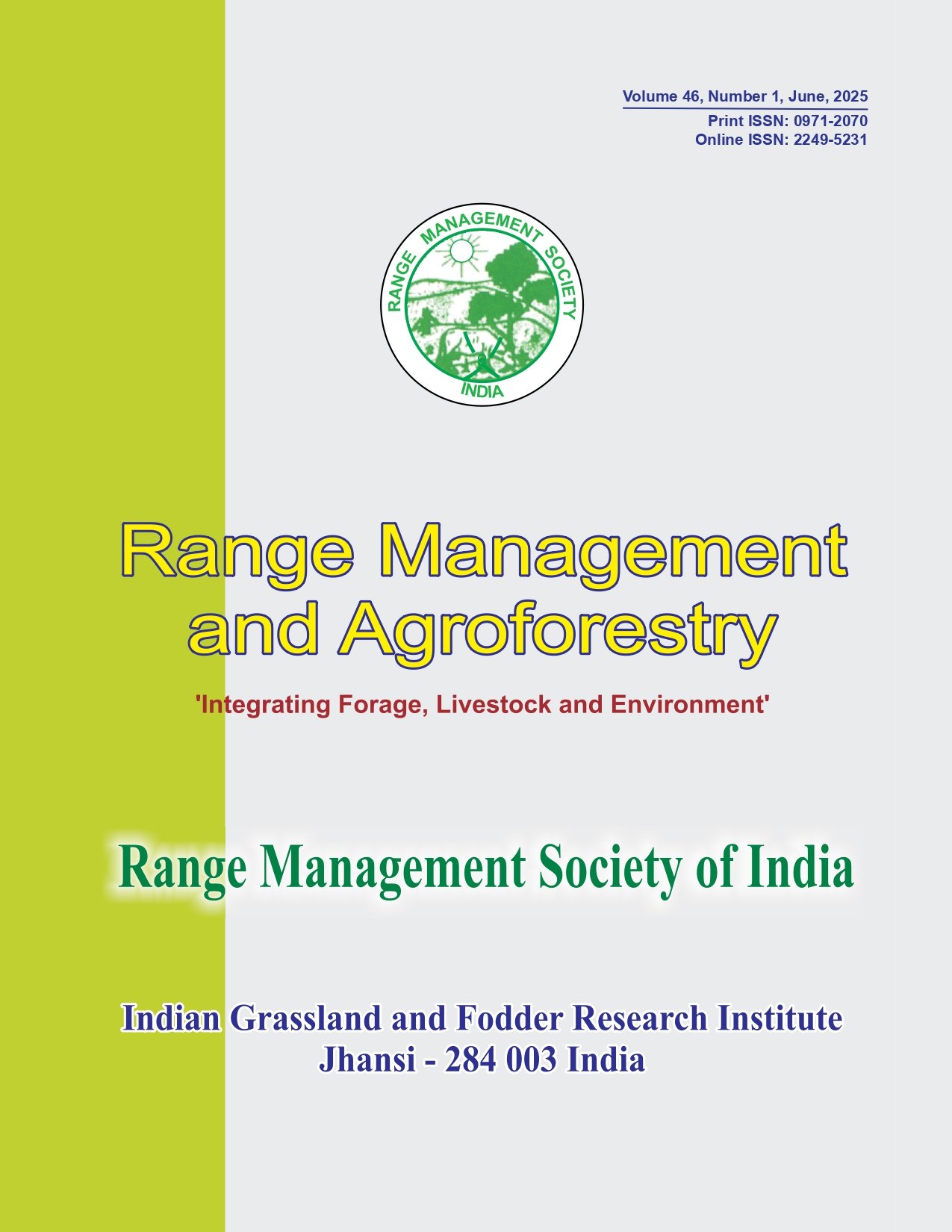Genetics of resistance against powdery mildew (Blumeria graminis f.sp. avenae) in oat (Avena sativa) under northwestern Himalayan conditions
DOI:
https://doi.org/10.59515/rma.2025.v46.i1.10Keywords:
Avena sativa, Blumeria graminis f. sp. avenae, Fodder oat, Inheritance, Powdery mildew, ResistanceAbstract
The inheritance pattern of oat’s resistance to powdery mildew (caused by Blumeria graminis f. sp. avenae), one of the most destructive foliar diseases, was investigated. The segregation pattern of resistance was studied in progenies of F1, F2 and BC1 generations, derived from different cross combinations of three resistant oat genotypes viz., JPO-46, Palampur-1 and KRR-AK-26 with susceptible genotype HJ-8. Progenies were grown under natural epiphytotic and controlled conditions in the humid, sub-tropical climate of Palampur, located in the northwestern Himalayas. The resistant reaction of the F1 plants, derived from different cross combinations, suggested the dominance of resistance over susceptibility to powdery mildew in oat genotypes. F2 segregation of each cross showed a close fit to a 3:1 (Resistant: Susceptible) ratio as determined by significant chi-square value, both under field and controlled conditions, representing true genetic segregation. Backcross combinations (BC1) of each cross further agreed with the dominant behavior of the resistance, as shown by the segregation pattern of a 1:1 ratio. Hence, this study confirmed the single dominant gene-governed resistance of three genotypes, viz., JPO-46, Palampur-1, and KRR-AK-26, against powdery mildew. These lines can be utilized in breeding programs as valuable donors of resistance to powdery mildew for incorporation into the cultivated varieties of oats.
Downloads
Downloads
Published
How to Cite
Issue
Section
License
Copyright (c) 2025 Rajni Devi, Vinod Kumar Sood, Devinder Kumar Baniyal

This work is licensed under a Creative Commons Attribution-ShareAlike 4.0 International License.







